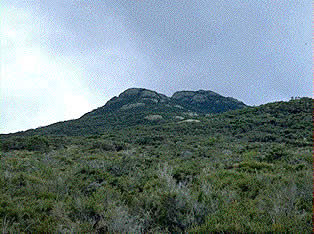Nitrogen Fixation: N-fixing Plants
Many N-fixing organisms live free in the soil. However, some form symbiotic relationships with the roots of various plant species.
Nitrogen fixed by these is transferred directly to the host plant.
It is estimated that symbiotic N-fixation produces up to 80% of the biologically fixed N on land.
Symbioses with N-fixing microbes are comparatively common among Australian native plants, particularly within our open-forests, woodland and heathland communities. N-fixation is also important to Australian agriculture due to the widespread cultivation of N-fixing pasture species.

Coastal heathlands typically occur on infertile soils and can support a range of N-fixing microbes and plant/microbe associations. The dominant shrub in this heathland is an N-fixer (Allocasuarina paludosa) and N-fixing acacias and peas are also common. N-fixing cycnobacteria can form mats on the soil surface and are symbionts in some common lichens.
